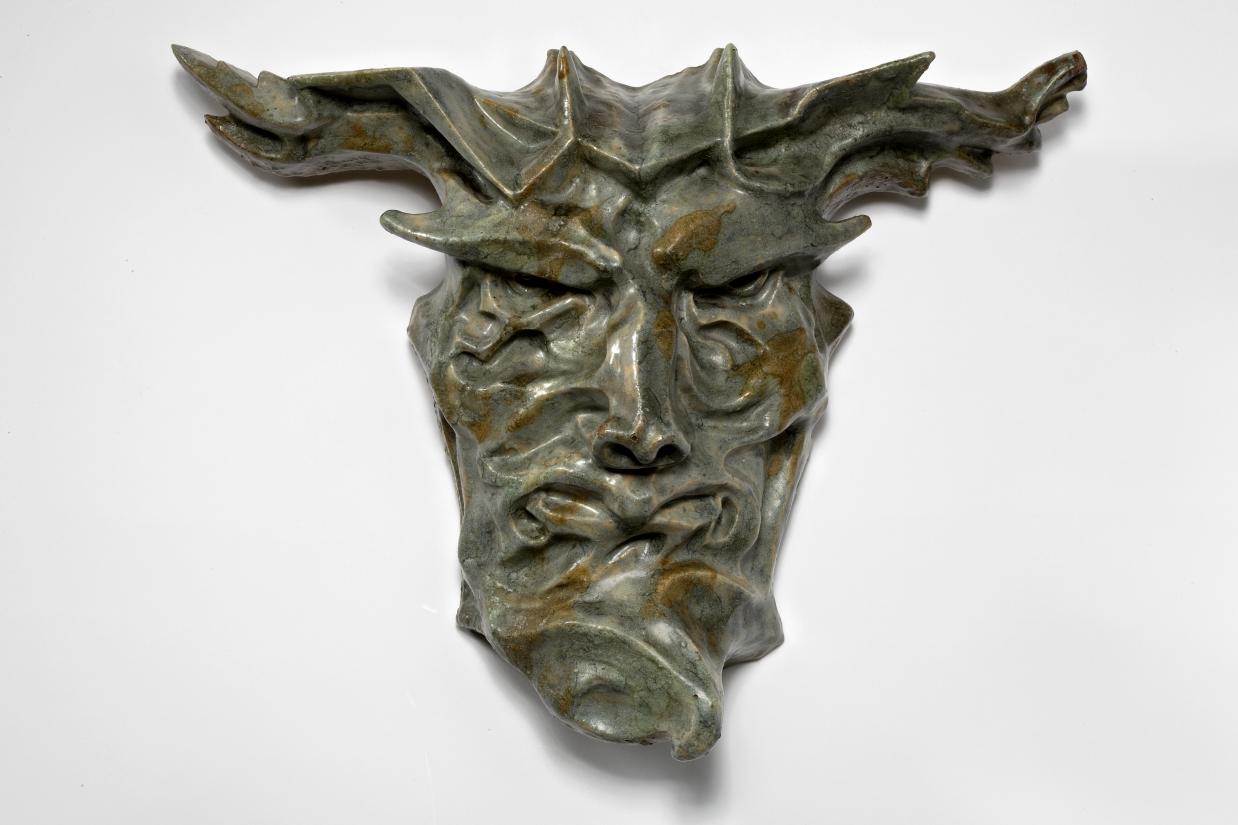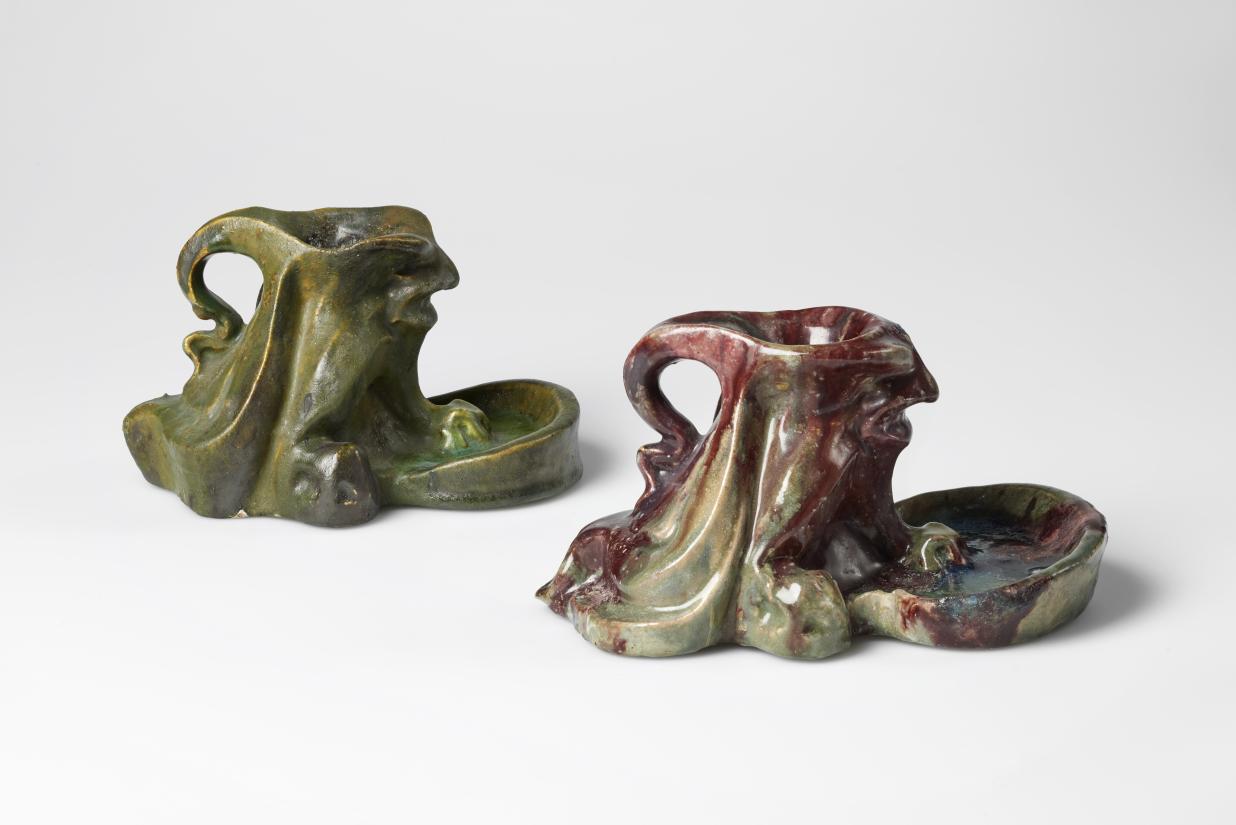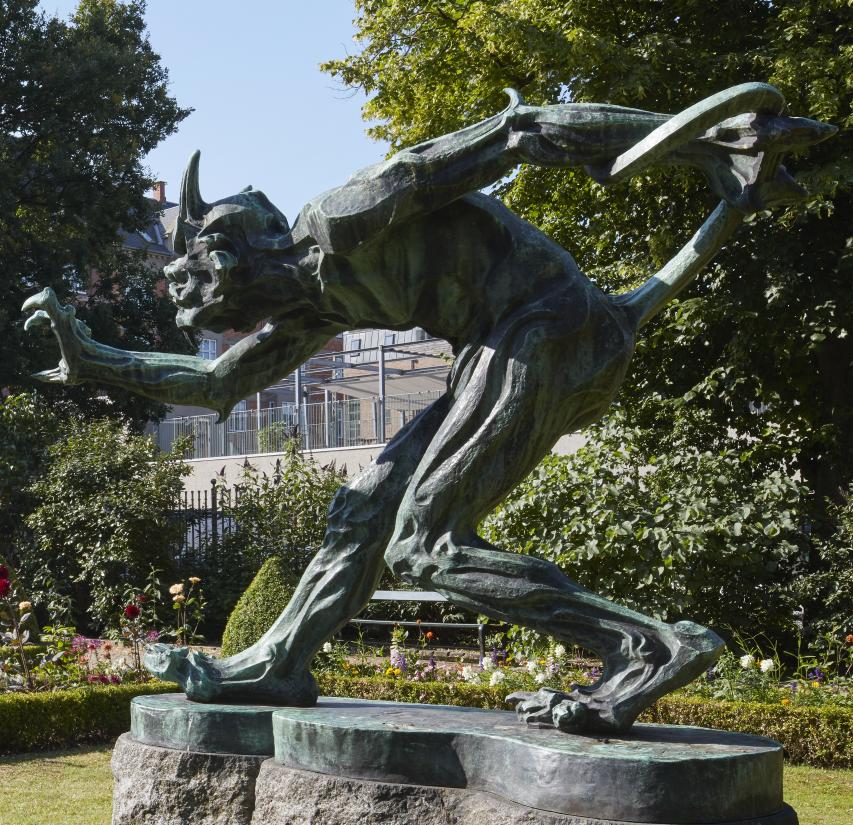From 29 January, the Musée Bourdelle presents The Strange Tales of Niels Hansen Jacobsen – A Dane in Paris, an exhibition dedicated to Hansen Jacobsen’s sculptures and ceramic works from his time in Paris in 1892–1901. The exhibition explores the artist’s mysterious and enigmatic universe. The catalogue is the first French publication to address Hansen Jacobsen’s work and his important role in the symbolist movement.
The Paris years
Niels Hansen Jacobsen (1861–1941) met the avant-garde at Montparnasse. His encounter with the French ceramicist Jean Carriès was particularly consequential and marked the beginning of Hansen Jacobsen’s life-long engagement with ceramics.
Like the other artists in the symbolist movement, Hansen Jacobsen challenged the naturalist and realist style that prevailed at the time. With inspiration from Hans Christian Andersen’s fairy tales and Norse mythology, he created strange and expressive figures. It was during this time in Paris that he created several of his principal works, including Døden og Moderen (Death and the Mother) (1892), Skyggen (The Shadow) (1898) and Trold der vejrer kristenblod (Troll Scenting Christian Blood) (1896).
Jacobsen and Jacobsen
Trold der vejrer kristenblod became the topic of a minor scandal with Carl Jacobsen, the founder of the New Carlsberg Foundation, in the lead role. Jacobsen bought the bronze in 1901 and placed it in front of Jesuskirken (Jesus Church) in Valby, a building he had commissioned. However, the scary troll sparked such intense objections from the church-goers that it eventually had to be removed, and today, it stands the garden of the New Carlsberg Glyptotek. In 2001, the church asked to have the troll back. Thus, in conjunction with the centenary of the New Carlsberg Foundation, a copy was produced that now stands in front of the church.
Carl Jacobsen saw the artistic value of Hansen Jacobsen’s sculptures. And against advice, the headstrong Jacobsen purchased several of them, including Døden og Moderen, which is now placed by Sankt Petri Kirke (St. Peter’s Church) in Copenhagen.
The catalogue
The New Carlsberg Foundation has supported the exhibition catalogue, which introduces Hansen Jacobsen’s artistic work to a French audience. Hansen Jacobsen’s works were frequently exhibited in Paris during his lifetime but have remained under the radar in France for the past 20 years. The catalogue consists of essays by prominent art historians from France, Finland and Denmark.
The exhibition was created in collaboration with Vejen Art Museum and is on display at the Parisian Musée Bourdelle, a real gem of an art museum, until 31 May 2020.
About Niels Hansen Jacobsen
Hansen Jacobsen was born in the town of Vejen, Jutland, in 1861 as the son of a farmer. He trained at the Royal Danish Academy of Fine Arts in Copenhagen from 1884 to 1889. After his graduation, he debuted at the Charlottenborg exhibition with Den bundne Loke (The Bound Loki), which was recognized with the Annual Medal. He lived in Paris from 1892 to 1901 together with his first wife, who was a painter. After her death, he returned to Vejen, where Vejen Art Museum was built in 1924 to house his works. He lived and worked in Vejen until his death in 1941.





